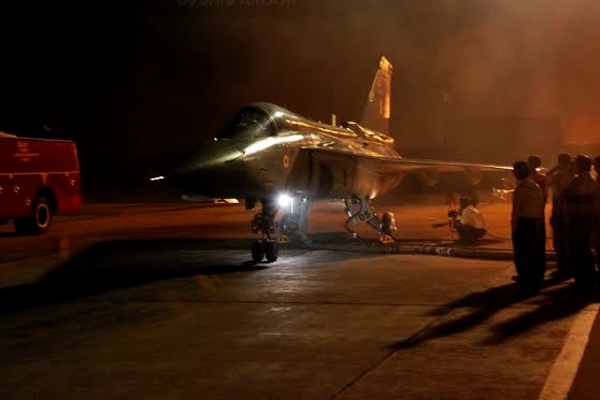Hard work pays off; DRDO demonstrates first-ever successful night-time landing of Naval version of LCA
New Delhi, November 14: Demonstrating its exuberant act of defensive performance, the Defence Research and Development Organisation (DRDO) in a first, had a successful night time “arrested landing’’ of Light Combat Aircraft carried out by the Indian Navy at Shore Based Test Facility INS Hansa, Goa on Nov 12.The landing at 6.45 pm was to demonstrate the ease of handling and confidence achieved in arrested landing technologies of the indigenous aircraft being made at Hindustan Aeronautics Limited (HAL).

The Light Combat Aircraft (LCA) which is made in India and designed and developed by Indians has been showing success at critical tests which are being carried out for the Indian navy. In another first, the naval prototype-2 had successfully completed the cycle of launch and recovery necessary for aircraft carrier operations in a single sortie off the ski-jump.
According to DRDO officials, “Series of tests have been carried out successfully and now with the “arrested landing’’ at night time this is another major success.” The tests for the Indian Navy are carried out with the involvement of other agencies including DRDO, ADA.
The team of LCA has been involved in not only conceptualizing but also experimenting with the complex software modes which are very important for the unique Short Take-Off but Arrested Recovery (STOBAR) concept of aircraft. Indian Navy Scorpene class submarine INS Khanderi: It’s a deadly deep-sea predator.
In September, the Indian Navy after the successful tests had joined an elite group of countries which boasts of design capability of designing an aircraft which can land on an aircraft carrier and that too during night time. Countries that currently have this capability include the US, Russia, the UK, and France.
The agencies are carrying out tests on the twin variant of the Naval version of the aircraft. The Naval version was launched in 2012 and since then there have been two prototypes which have been developed.